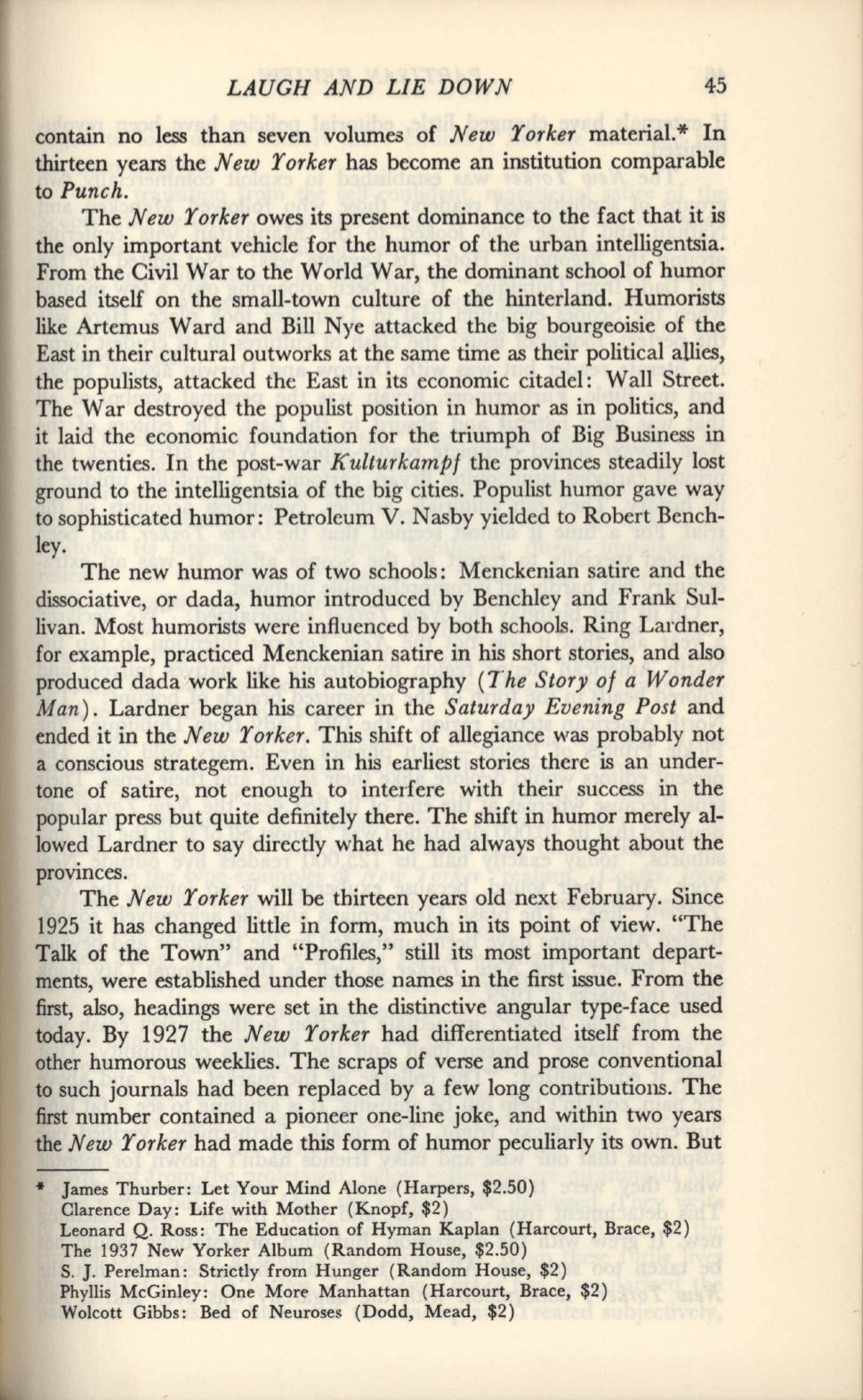
LAUGH AND LIE DOWN
45
contain no less than seven volumes of
New 'rorker
material.* In
thirteen years the
New 'r orker
has become an institution comparable
to
Punch.
The
New 'rorker
owes its present dominance to the fact that it is
the only important vehicle for the humor of the urban intelligentsia.
From the Civil War to the World War, the dominant school of humor
based itself on the small-town culture of the hinterland. Humorists
like Artemus Ward and Bill Nye attacked the big bourgeoisie of the
East in their cultural outworks at the same time as their political allies,
the populists, attacked the East in its economic citadel: Wall Street.
The War destroyed the populist position in humor as in politics, and
it laid the economic foundation for the triumph of Big Business in
the twenties. In the post-war
Kulturkampf
the provinces steadily lost
ground to the intelligentsia of the big cities. Populist humor gave way
to sophisticated humor: Petroleum V. Nasby yielded to Robert Bench-
ley.
The new humor was of two schools: Menckenian satire and the
dissociative, or dada, humor introduced by Benchley and Frank Sul-
livan. Most humorists were influenced by both schools. Ring Lardner,
for example, practiced Menckenian satire in his short stories, and also
produced dada work like his autobiography
(The Story of a Wonder
Man).
Lardner began his career in the
Saturday Evening Post
and
ended it in the
New 'rorker.
This shift of allegiance was probably not
a conscious strategem. Even in his earliest stories there is an under-
tone of satire, not enough to interfere with their success in the
popular press but quite definitely there. The shift in humor merely al-
lowed Lardner to say directly what he had always thought about the
provinces.
The
New 'rorker
will be thirteen years old next February. Since
1925 it has changed little in form, much in its point of view. "The
Talk of the Town" and "Profiles," still its most important depart-
ments, were established under those names in the first issue. From the
first, also, headings were set in the distinctive angular type-face used
today. By 1927 the
New 'r orker
had differentiated itself from the
other humorous weeklies. The scraps of verse and prose conventional
to such journals had been replaced by a few long contributions. The
firstnumber contained a pioneer one-line joke, and within two years
the
New 'r orker
had made this form of humor peculiarly its own. But
•• James Thurber: Let Your Mind Alone (Harpers, $2.50)
Clarence Day: Life with Mother (Knopf, $2)
Leonard
Q.
Ross: The Education of Hyman Kaplan (Harcourt, Brace, $2)
The 1937 New Yorker Album (Random House, $2.50)
S. J. Perelman: Strictly from Hunger (Random House, $2)
Phyllis McGinley: One More Manhattan (Harcourt, Brace, $2)
Wolcott Gibbs: Bed of Neuroses (Dodd, Mead, $2)


